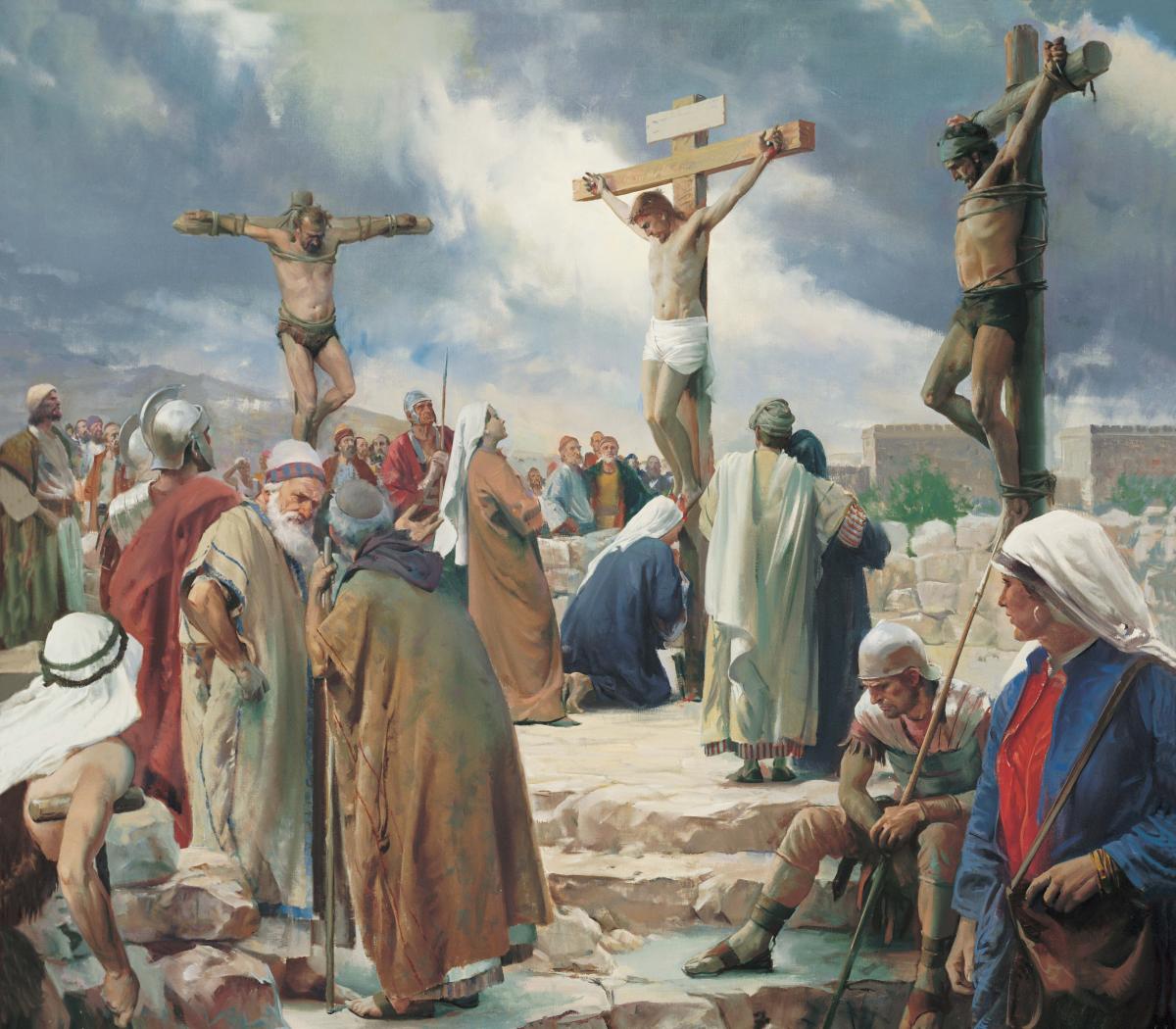To accompany your Come Follow Me study for June 19-25
In addition to reading the indicated chapters, you may wish to:
Read the applicable portions of the New Testament Institute Student Manual at
- Chapter 10: Matthew 27–28 (churchofjesuschrist.org)
- Chapter 14: Mark 11–16 (churchofjesuschrist.org)
- Chapter 20: Luke 23–24 (churchofjesuschrist.org)
- Chapter 27: John 17–19 (churchofjesuschrist.org)
See the following videos:
- Jesus Is Condemned before Pilate at Jesus Is Condemned Before Pilate – YouTube
- Jesus Is Scourged and Crucified at Jesus Is Scourged and Crucified – YouTube
- Jesus Is Laid in a Tomb at Jesus Is Laid in a Tomb – YouTube
- The Gospel According to Matthew (from minute 3:54:33-4:10:32) at https://www.youtube.com/watch?v=woAhReBytBk&t=6494s
- The Gospel of Mark Visual Bible (from minute 1:21:50-1:27:43) at https://www.youtube.com/watch?v=BcdgY7V4jZ4&t=1190s
- The Gospel of Luke (from minute 3:34-3:53:47) at https://www.youtube.com/watch?v=2PHPLApTt7Y
The Gospel of John (from minute 2:27:56-2:40:49) at https://www.youtube.com/watch?v=kAAZ6HPXdMU
If you would like a Kahoot game related to this material which you could use for personal study or use with your family or your class, click here: https://create.kahoot.it/share/matthew-27-mark-15-luke-23-john-19/460f6dc0-9bee-4593-8199-78aab7829737. (To use it with a group, after clicking on this link, you will need to log into Kahoot, creating a free account if you have not done so previously, then click on the blue “Start” button.)
Points to Ponder in Matthew 27; Mark 15; Luke 23; John 19
1. Rank the following from most guilty and deserving of divine punishment for causing Jesus’ death to least guilty, in your opinion, and tell why you so ranked them:
- the chief priests and Pharisees in general
- Judas
- Caiaphas
- Herod
- Pilate
- the apostles who fled
- the multitude who clamored for His crucifixion
- the Roman soldiers who drove the nails
2. The Gospels record seven statements of Jesus on the cross, but no one writer lists them all. What do believe the order was of the seven statements, and how would you most easily check to see if reputable scholars agree with you?
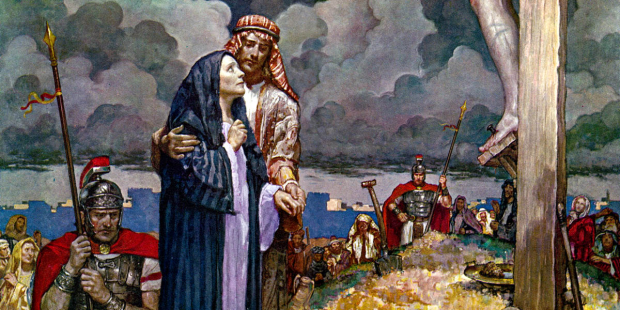
3. What most impresses you about Jesus’ conduct during his hearings and trial?
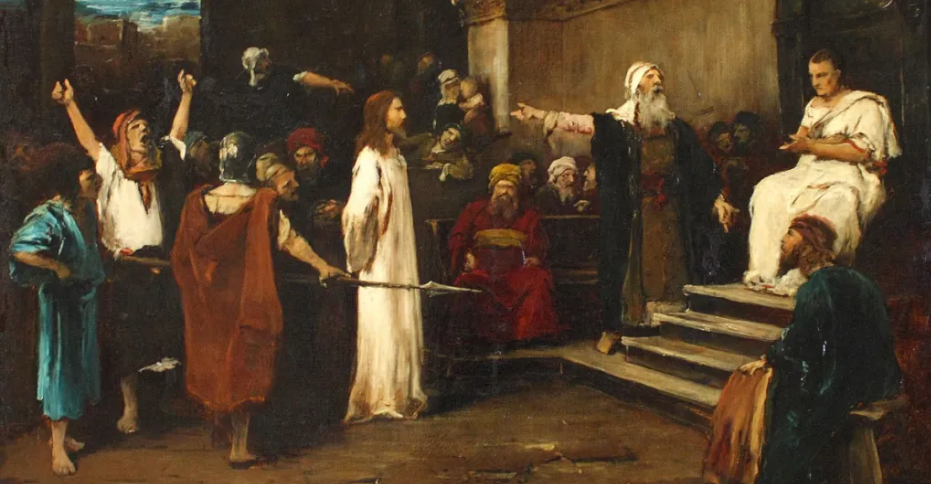
4. Why would Judas have committed suicide at the very moment his goals were being realized?
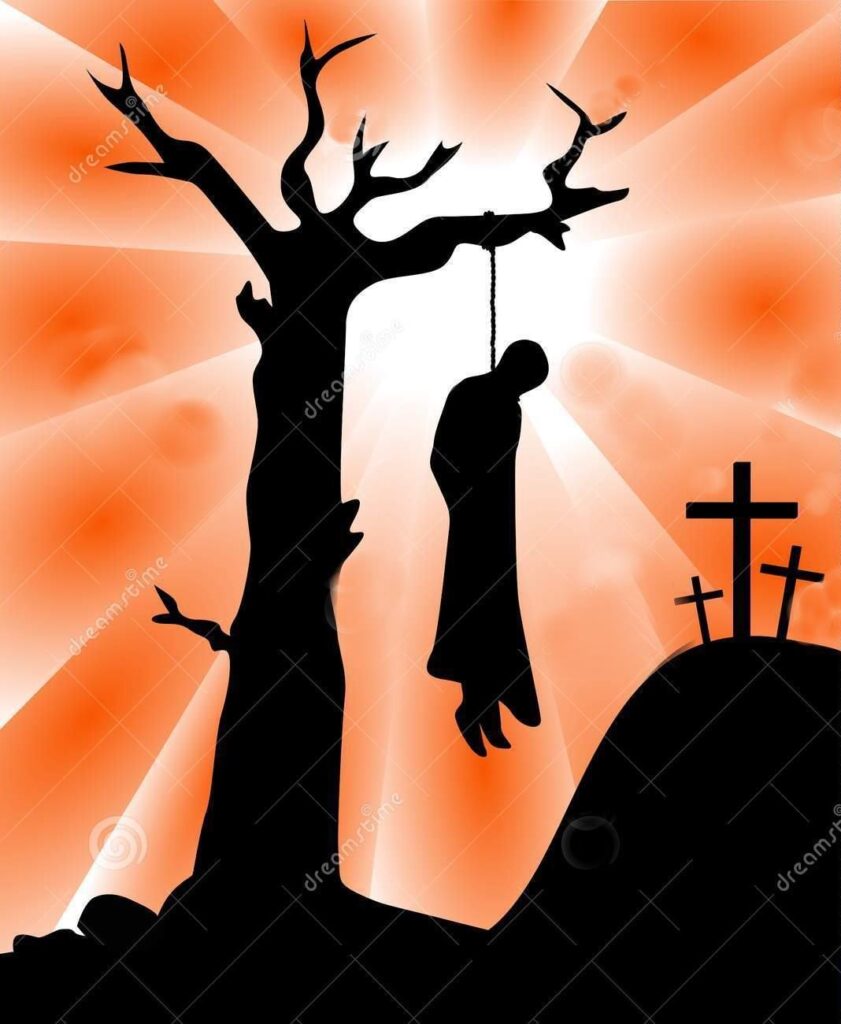
5. How do you reconcile the seeming contradiction between Matthew 27:5 and Acts 1:18 concerning how Judas died?
6. Why do no two of the Gospel writers agree as to the content of the sign which Pilate had hung above Jesus on the cross? Which one would you suppose is the most accurate, and why?
7. What Old Testament prophecies were fulfilled by the details of Jesus’ death, as cited in this week’s reading?
8. What is arguably the most wonderful thing recorded in this week’s reading, though out of chronological order?
9. How could Jesus promise immediate paradise to the repentant thief when there was no opportunity for baptism at that point and we have been taught that deathbed repentance is of no efficacy?
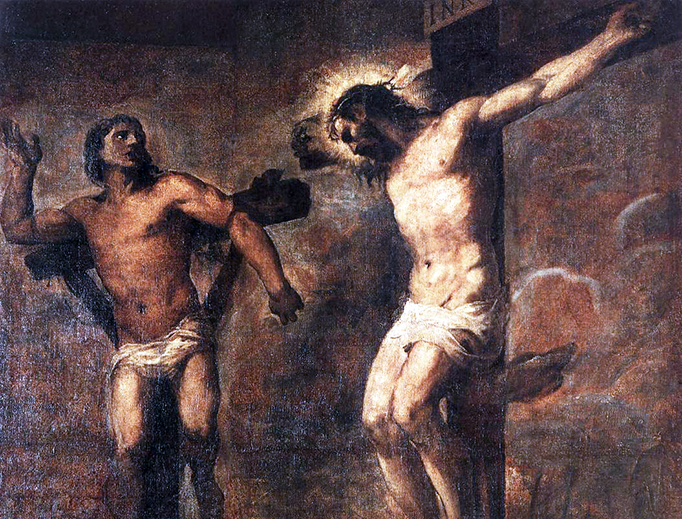
10. What is the answer to the question Jesus raised on the cross as to why his Father had forsaken him?
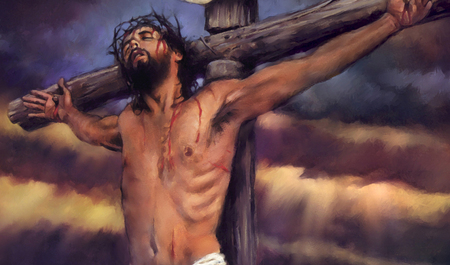
11. What clarification did Joseph Smith offer concerning Jesus’ plea, “Father forgive them, for they know not what they do”?
12. What do you understand to be the significance of the rending of the temple veil following the crucifixion?
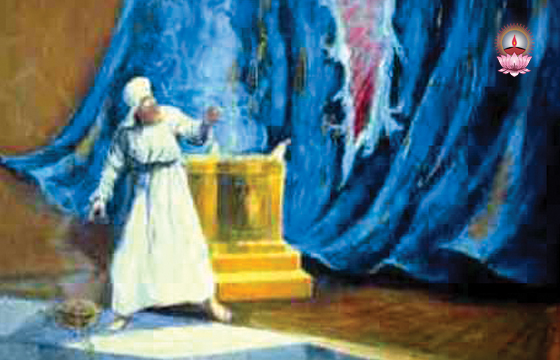
13. What is so ironic about the haste with which Jesus was buried?
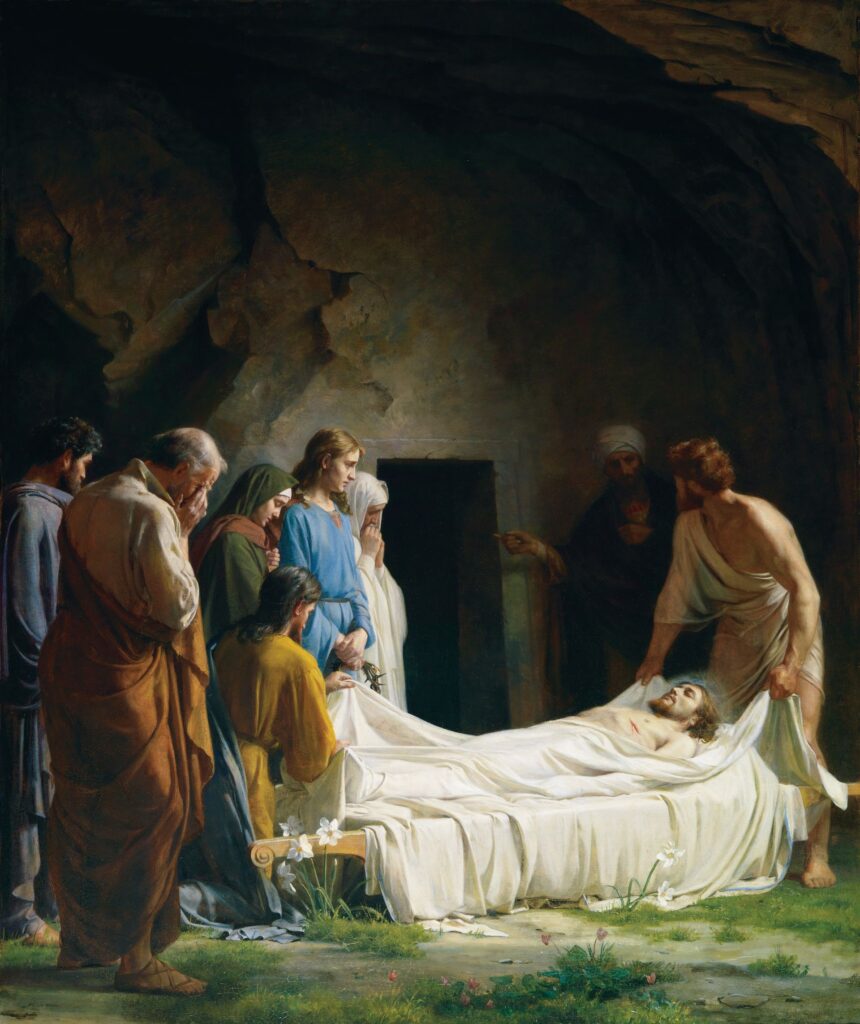
Possible Answers to Points to Ponder in Matthew 27; Mark 15; Luke 23; John 19
1. Rank the following from most guilty and deserving of divine punishment for causing Jesus’ death to least guilty, in your opinion, and tell why you so ranked them:
- the chief priests and Pharisees in general
- Judas
- Caiaphas
- Herod
- Pilate
- the apostles who fled
- the multitude who clamored for His crucifixion
- the Roman soldiers who drove the nails
Fortunately, divine judgment will be meted out by One who knows the hearts of those involved much better than we do, but the following is my own current opinion:
- Judas: The only one labeled by Jesus Himself as a “son of perdition in both the New Testament and Book of Mormon. The only one who was an apostle, had a witness of Christ’s divinity, and rose up against Him. As Jesus told Pilate, “He that delivered me unto thee hath the greater sin.” (John 19:11.)
- Caiaphas: The chief high priest, who of all the Jews should have been in the forefront of welcoming their Messiah rather than executing Him.
- The Pharisees and chief priests in general: Perhaps they had a less central role than Caiaphas but a greater role than the public in general.
- The multitude who clamored for His crucifixion: Less educated and less responsible than their leaders.
- Pilate: A Roman, not a Jew. Was reluctant to see Jesus executed, but facilitated it, despite his wife’s warning following her inspired dream.
- Herod: Had a less central role in the proceedings than did Pilate.
- The apostles who fled: Though Peter subsequently wept bitter tears, it is hard to blame him for letting fear take over. And at least John showed up prominently at the crucifixion.
- The Roman soldiers who drove the nails: Just doing their job. Jesus prayed that they might be forgiven.
2. The Gospels record seven statements of Jesus on the cross, but no one writer lists them all. What do believe the order was of the seven statements, and how would you most easily check to see if reputable scholars agree with you?
The harmony at ParallelGospels.NET – An online harmony of the Gospels suggests the following order:
- Luke 23:34: “Father forgive them, for they know not what they do.”
- Luke 23:43: “Today shalt thou be with me in paradise.”
- Matthew 27:46; Mark 15:34: “Eli, Eli, lama sabachthani?” (“My God, my God, why hast thou forsaken me?”)
- John 19:26-27: To Mary: “Woman, behold thy son!” To John: “Behold thy mother!”
- John 19:28: “I thirst.” (Psalms 69:21)–to fulfill scripture
- John 19:30: “It is finished.”
- Luke 23:46: “Father, into thy hands I commend my spirit.”
3. What most impresses you about Jesus’ conduct during his hearings and trial?
Your choice. I found it impressive that Jesus pointedly told Pilate that He was indeed a King and boldly told the Roman governor that He had no power over Him at all except that which His Father allowed. But I am equally impressed that He didn’t honor the accusations of the false witnesses with any response at all. And I am struck by the fact that Jesus bore the scourging and mockery with courage and dignity.
4. Why would Judas have committed suicide at the very moment his goals were being realized?
His story brings to mind Mormon’s observation in Alma 30:60, that “the devil will not support his children at the last day, but doth speedily drag them down to hell.” Judas didn’t feel the satisfaction he had expected upon “getting even” for Jesus’ perceived slights to him and his family but no doubt felt only an overpowering sense of guilt and despair, as the Spirit of the Lord virtually completely withdrew from him and left him under the influence of him who desires that all men might be miserable like himself.
5. How do you reconcile the seeming contradiction between Matthew 27:5 and Acts 1:18 concerning how Judas died?
Joseph Smith felt inspired to amend Matthew 27:5 to read: “And he cast down the pieces of silver in the temple, and departed, and went and hanged himself on a tree. And straightway he fell down [perhaps from the rope breaking], and his bowels gushed out, and he died,” thus harmonizing the two accounts.
6. Why do no two of the Gospel writers agree as to the content of the sign which Pilate had hung above Jesus on the cross? Which one would you suppose is the most accurate, and why?
This is another excellent example of how the scriptures are not 100% infallible, but in some cases represent the best recollection or best information in the possession of the writer. Matthew says the sign read, “This is Jesus the King of the Jews.” Mark abbreviates it to “The king of the Jews.” Luke says it read, “This is the king of the Jews.” John says, “the writing was, ‘Jesus of Nazareth the king of the Jews.’” John’s version is the most complete, and John spends the most time discussing it. Furthermore, the Joseph Smith Translation of the Matthew passage also assures us that John’s version was correct.
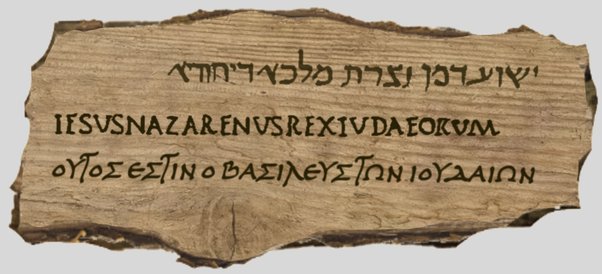
7. What Old Testament prophecies were fulfilled by the details of Jesus’ death, as cited in this week’s reading?
- Matthew 27:9-10, referring to the thirty pieces of silver for which Jesus was sold, seems to be quoting Zechariah 11:12, although Matthew attributes it to Jeremiah. It is possible that Jeremiah really did say it first, although it is not to be found in our present Book of Jeremiah. It is also possible that Matthew was simply confused on this point and said “Jeremiah” when he really meant “Zechariah.”
- Matthew 27:14, where Jesus answered not a word, corresponds to Isaiah 53:7: “He was oppressed, and he was afflicted, yet he opened not his mouth.”
- Matthew 27:26, speaking of Jesus’ scourging, corresponds to Isaiah 53:5: “With his stripes we are healed.”
- Matthew 27:30, where Jesus is spit upon, was foretold in Isaiah 50:6: “I hid not my face from shame and spitting.”
- Matthew 27:34 fulfills Psalms 69:21: “They gave me also gall for my meat; and in my thirst they gave me vinegar to drink.”
- Matthew 27:35 quotes Psalms 22:18, “They part my garments among them, and cast lots upon my vesture.”
- Matthew 27:38, 44, detailing Jesus’ crucifixion among two thieves, brings to mind Isaiah 53:9, 12: “He made his grave with the wicked. … He was numbered with the transgressors.”
- Matthew 27:43, “He trusted in God; let him deliver him now,” seems to refer to Psalms 22:8.
- In Matthew 27:46 and Mark 15:34 Jesus seems to be quoting Psalms 22:1 when He says, “My God, my God, why hast thou forsaken me”?
- Mark 15:28 tells us that “the scripture [Isaiah 53:12] was fulfilled, which saith, And he was numbered with the transgressors.”
- John 19:24 also quotes Psalms 22:18, as did Matthew 27:35, concerning the parting of Jesus raiment and the casting of lots for His vesture.
- John 19:28, “I thirst,” seems to have been foretold in Psalms 22:15: “My strength [or mouth] is dried up like a potsherd; and my tongue cleaveth to my jaws.”
- John 19:36 refers to a scripture that said, “A bone of him shall not be broken.” This may refer back to Psalms 34:20 and seems to explain the symbolism of the edict in Exodus 12:46 and Numbers 9:12 that no bone was to be broken of the Passover lamb.
- John 19:37 quotes a scripture which said, “They shall look on him whom they pierced.” This could be referring to Zechariah 12:10, though Psalms 22:16 says something similar.
8. What is arguably the most wonderful thing recorded in this week’s reading, though out of chronological order?
It would certainly be Matthew 27:52-53, which tells us that “the graves were opened; and many bodies of the saints which slept arose, and came out of the graves after his resurrection, and went into the holy city, and appeared unto many.” But as the passage itself correctly records, this was only after the resurrection of Jesus Himself, which doesn’t happen until the following chapter.
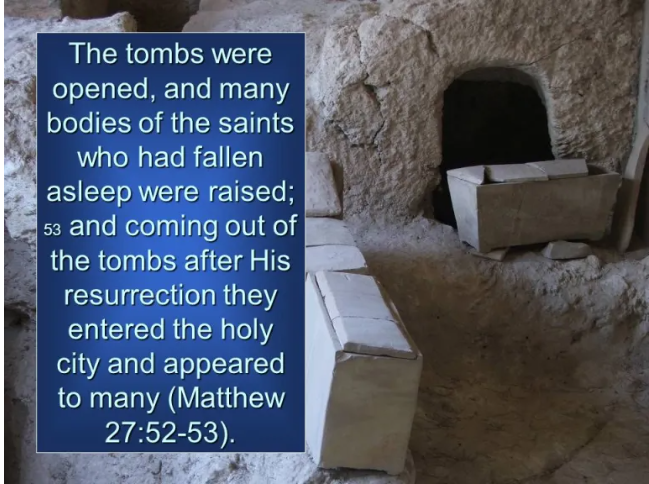
9. How could Jesus promise immediate paradise to the repentant thief when there was no opportunity for baptism at that point and we have been taught that deathbed repentance is of no efficacy?
Jesus is simply telling the thief that they would be together that day in the world of spirits, where the thief could hear the gospel along with others who had not had that opportunity yet. It by no means was a guarantee of eternal life in the celestial kingdom. That would depend on the thief’s acceptance of the gospel message.
10. What is the answer to the question Jesus raised on the cross as to why his Father had forsaken him?
Elder Jeffrey R. Holland offers the following explanation: “With all the conviction of my soul I testify that He did please His Father perfectly and that a perfect Father did not forsake His Son in that hour. Indeed, it is my personal belief that in all of Christ’s mortal ministry the Father may never have been closer to His Son than in these agonizing final moments of suffering. Nevertheless, that the supreme sacrifice of His Son might be as complete as it was voluntary and solitary, the Father briefly withdrew from Jesus the comfort of His Spirit, the support of His personal presence. It was required; indeed it was central to the significance of the Atonement, that this perfect Son who had never spoken ill nor done wrong nor touched an unclean thing had to know how the rest of humankind—us, all of us—would feel when we did commit such sins. For His Atonement to be infinite and eternal, He had to feel what it was like to die not only physically but spiritually, to sense what it was like to have the divine Spirit withdraw, leaving one feeling totally, abjectly, hopelessly alone.
“But Jesus held on. He pressed on. The goodness in Him allowed faith to triumph even in a state of complete anguish. … Because Jesus walked such a long, lonely path utterly alone, we do not have to do so” (“None Were with Him,” Ensign or Liahona, May 2009, 87–88).
11. What clarification did Joseph Smith offer concerning Jesus’ plea, “Father forgive them, for they know not what they do”?
In the JST there is a parenthetical addition to Luke 23:34 which says that when Jesus prayed for their forgiveness He was speaking of “the soldiers who crucified him,” not for all who knew well what they were doing in causing His crucifixion.
12. What do you understand to be the significance of the rending of the temple veil following the crucifixion?
The Institute New Testament Student Manual explains: “The Holy of Holies was the most sacred room in the ancient temple; it symbolized the presence of God. Once a year, on the Day of Atonement, the high priest passed through the veil of the temple and entered into the Holy of Holies, where he sprinkled the blood of a sin offering to atone for the sins of all the congregation of Israel (see Leviticus 16). When the veil of the temple was “rent in twain” (torn in two) at the death of Jesus Christ (Matthew 27:51), it was a dramatic symbol that the Savior, the Great High Priest, had passed through the veil of death and would shortly enter into the presence of God. For more information on Jesus as High Priest, see the commentary for Hebrews 9:11–15, 23–28; 10:1.
“Elder Bruce R. McConkie wrote that in addition to the Savior entering the presence of the Father, ‘the Holy of Holies is now open to all, and all, through the atoning blood of the Lamb, can now enter into the highest and holiest of all places, that kingdom where eternal life is found. Paul, in expressive language (Heb. 9 and 10), shows how the ordinances performed through the veil of the ancient temple were in similitude of what Christ was to do, which he now having done, all men become eligible to pass through the veil into the presence of the Lord to inherit full exaltation’ (Doctrinal New Testament Commentary, 1:830). The Apostle Paul taught that just as the torn veil of the temple allowed symbolic entrance into the Holy of Holies, it is the torn flesh of Jesus Christ that opens the way for us into the presence of the Father (see Hebrews 10:12, 19–20).”
13. What is so ironic about the haste with which Jesus was buried?
There seems to be a significant misplacement of priorities in those who were concerned that a dead body not be left hanging during any part of the Sabbath, and so broke the leg bones of the still living thieves to hasten their death, but who had no reservations about crucifying the very Son of God!
